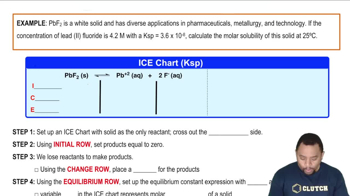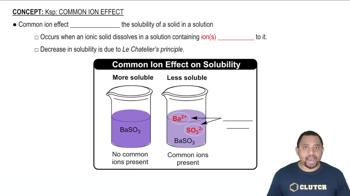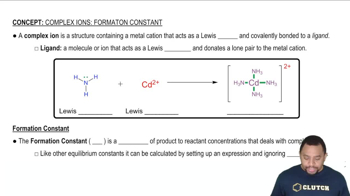Here are the essential concepts you must grasp in order to answer the question correctly.
Molar Solubility
Molar solubility refers to the maximum amount of a solute that can dissolve in a given volume of solvent at equilibrium, expressed in moles per liter (M). It is a crucial concept in understanding how solutes interact with solvents and is influenced by factors such as temperature and the presence of other ions in solution.
Recommended video:
Common Ion Effect
The common ion effect describes the decrease in solubility of a salt when a common ion is added to the solution. In the case of AgI, the presence of NaCN introduces CN⁻ ions, which can shift the equilibrium and reduce the solubility of AgI due to the formation of complex ions, thereby affecting the molar solubility.
Recommended video:
Formation Constant (Kf)
The formation constant (Kf) quantifies the stability of a complex ion in solution. For the complex ion [Ag(CN)2]⁻, a high Kf value (3.0 x 10^20) indicates that the complex is very stable, which significantly influences the solubility of AgI in the presence of CN⁻ ions, as it drives the equilibrium towards the formation of the complex and reduces the concentration of free Ag⁺ ions.
Recommended video:
Complex Ions and Formation Constant
 Verified step by step guidance
Verified step by step guidance


